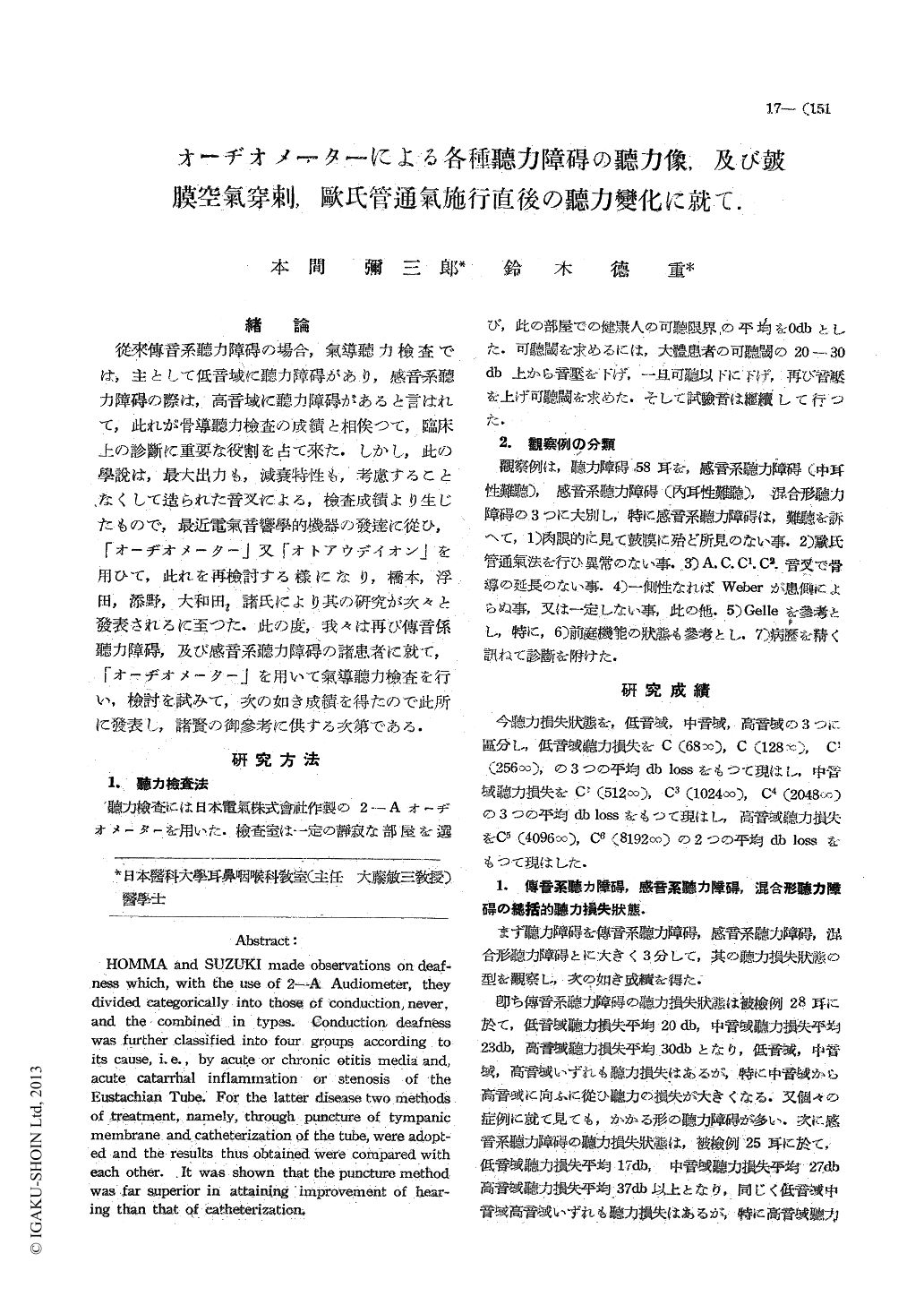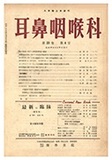- 有料閲覧
- 文献概要
- 1ページ目
緒論
從來傳音系聽力障碍の場合,氣導聽力檢査では,主として低音域に聽力障碍があり,感音系聽力障碍の際は,高音域に聽力障碍があると言はれて,此れが骨導聽力檢査の成績と相俟つて,臨床上の診断に重要な役割を占て來た.しかし,此の學説は,最大出力も,減衰特性も,考慮することなくして造られた音叉による,檢査成績より生じたもので,最近電氣音響學的機器の發達に從ひ,「オーヂオメーター」又「オトアウデイオン」を用ひて,此れを再檢討する樣になり,橋本,浮田,添野,大和田,諸氏により其の研究が次々と發表されるに至つた.此の度,我々は再び傳音係聽力障碍,及び感音系聽力障碍の諸患者に就て,「オーヂオメーター」を用いて氣導聽力檢査を行い,檢討を試みて,次の如き成績を得たので此所で發表し,諸賢の御参考に供する次第である.
HOMMA and SUZUKI made observations on deaf-ness which, with the use of 2-A Audiometer, they divided categorically into those of Conduction, never, and the combined in types. Conduction deafness was further classified into four groups according to its cause, i. e., by acute or chronic otitis media and, acute catarrhal inflammation- or stenosis of the Eustachian Tube: For the latter disease two Methods of treatment, namely, through puncture of tympanic membrane and, catheterization of the tube, were adopt-ed and the results thin obtained were compared with each other. It was shown that the puncture method was far superior in attaining imprevement of hear-ing than that of catheterization.

Copyright © 1951, Igaku-Shoin Ltd. All rights reserved.


